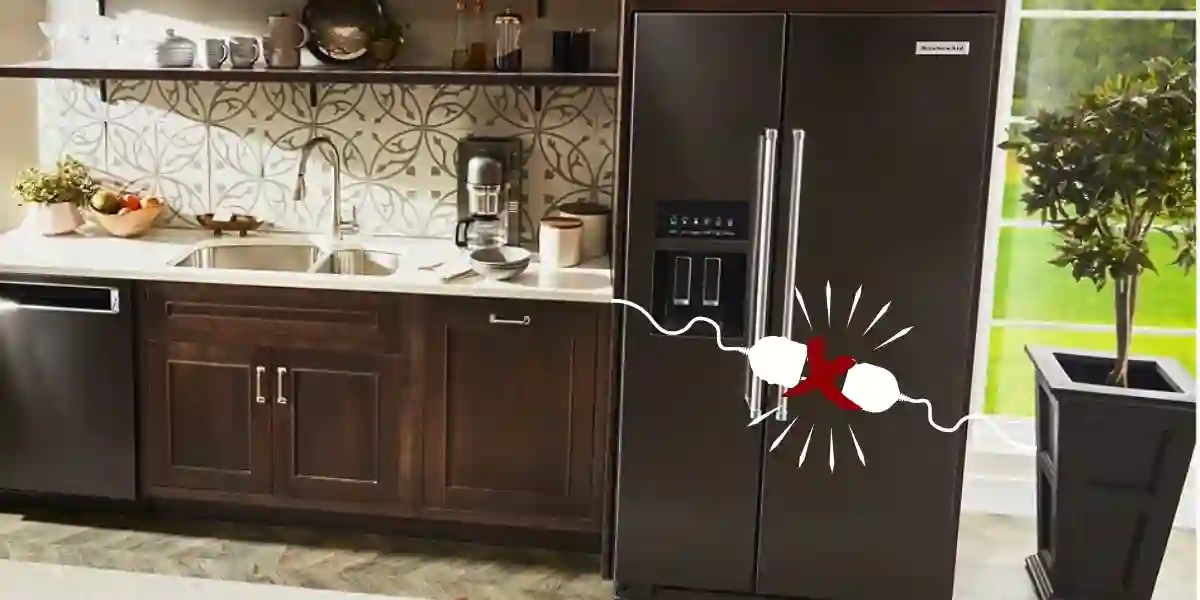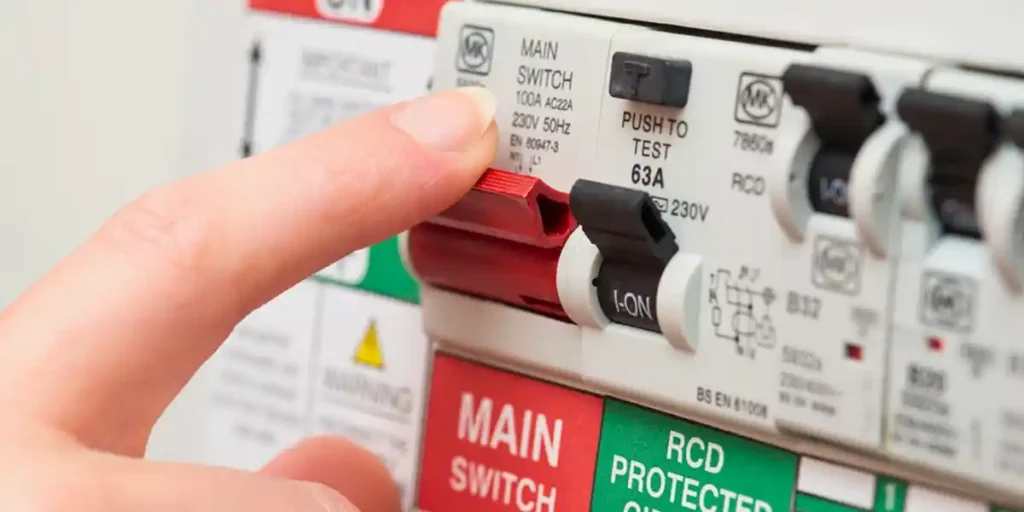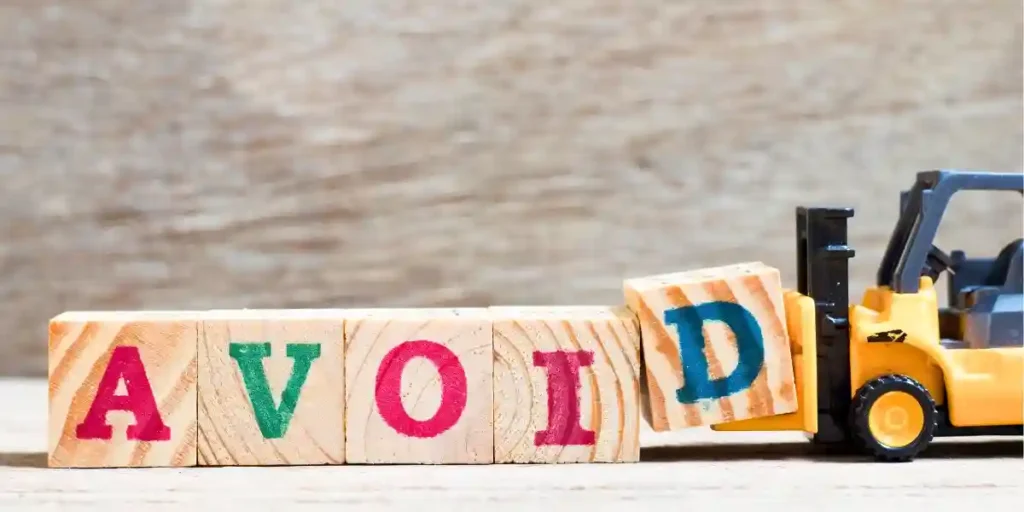
Turning off your KitchenAid refrigerator without unplugging it can be a simple task if you know the right steps. Whether your model has a power button, uses the Lock and Measured Fill buttons, or the Options button, each method provides a safe way to turn off the cooling system while still keeping the appliance powered.
This guide will walk you through the different methods based on various models, ensuring you can safely and effectively manage your KitchenAid refrigerator’s operations.
Quick Answer: How to Turn Off a KitchenAid Refrigerator without Unplugging
Turning off a KitchenAid refrigerator without unplugging it involves a few simple steps:
- Locate the control panel on your refrigerator.
- Look for the power button or refer to the user manual for specific instructions.
- Press the power button or follow the instructions to turn off the refrigerator.
- Confirm that the refrigerator is off by checking if the display lights are off.
How to Turn Off a KitchenAid Refrigerator Without Unplugging
There are several methods to turn off your KitchenAid refrigerator without unplugging it:
Using the Control Panel
The control panel is your first stop when you want to turn off your KitchenAid refrigerator. It’s as simple as locating the Power button on the panel and pressing it.
The refrigerator will shut down, but remember, the lights inside will also turn off. So, if you’re planning to clean the inside, you might need an extra source of light.
Advantages: This method is straightforward and doesn’t require any additional tools or steps.
Disadvantages: If the control panel is malfunctioning, this method may not work.
Turning off Circuit Breaker

If the control panel isn’t responding, don’t worry! You can turn off your KitchenAid refrigerator by switching off the circuit breaker.
Locate your home’s electrical service panel and find the breaker that controls your kitchen.
Flip it to the off position, and voila! Your refrigerator is off. But remember, this will also turn off other appliances connected to the same circuit.
Advantages: This method can be useful if the control panel is not working. It also ensures that all electrical components of the refrigerator are turned off.
Disadvantages: Turning off the circuit breaker will also turn off any other appliances connected to the same circuit.
Entering Sleep or Energy Saving Mode
Some KitchenAid refrigerator models come with a Sleep or Energy Saving mode. This mode reduces the refrigerator’s energy consumption without completely turning it off.
To activate this mode, you usually need to navigate through the control panel’s settings and select the appropriate option.
This method is ideal for short periods when you don’t need to use the refrigerator, like during a vacation.
Advantages: This method reduces energy consumption without completely turning off the refrigerator. It’s ideal for short periods when you don’t need to use the refrigerator.
Disadvantages: Not all models have this feature. Also, this mode doesn’t completely turn off the refrigerator, so it may not be suitable for long periods.
Methods to Turn Off a KitchenAid Refrigerator Without Unplugging based on various models
Method 1: Using the Power Button
Some KitchenAid refrigerators come with a power button that allows you to turn off the cooling system without unplugging the appliance. Here’s how you can do it:
- Locate the power button on your refrigerator. It’s usually found on the control panel.
- Press the power button. This will turn off the cooling system, but the refrigerator will still receive power.
Method 2: Using the Lock and Measured Fill Buttons
For some models of KitchenAid refrigerators, you can turn off the cooling by pressing and holding the Lock and Measured Fill buttons at the same time for 3 seconds. Here’s how:
- Find the Lock and Measured Fill buttons on your refrigerator’s control panel.
- Press and hold both buttons at the same time for 3 seconds.
- The display screen will show “Refrigeration Cooling Is Off” when the cooling is off.
Note: Remember, to avoid unintentionally locking the dispenser or changing other settings, be sure to press both buttons at the same time.
Method 3: Using the Options Button
Some KitchenAid refrigerators have a Max Cool feature that can be turned on or off using the Options button. Here’s how:
- Press the Options button to enter Options mode.
- Press Options again to activate or deactivate the Max Cool feature.
- The Max Cool icon will appear or disappear from the dispenser display depending on whether it’s activated or deactivated.
Note: Remember, when Max Cool is active, the temperature display will not change. The Max Cool feature assists with periods of heavy ice usage, full grocery loads, or temporarily warm room temperatures.
Safety Precautions When Turning Off Your KitchenAid Refrigerator

When turning off your refrigerator, remember to:
Ensure Door Closure
When turning off your KitchenAid refrigerator, the first step is to ensure that the door is properly closed. This prevents warm air from entering and causing condensation or mold growth inside the refrigerator.
Unload Perishable Items
Next, remove any perishable items from the refrigerator. These items could spoil if left inside a turned-off refrigerator for an extended period. It’s best to consume, donate, or dispose of these items beforehand.
Disengage Ice Maker
If your KitchenAid refrigerator has an ice maker, make sure to disengage it before turning off the refrigerator. This prevents the ice maker from trying to make ice without a cooling system in operation, which could potentially damage it.
Turn Off Water Supply (If Applicable)
Finally, if your refrigerator has a water dispenser, remember to turn off the water supply. This prevents any potential water leaks or flooding while the refrigerator is turned off.
Clean the Interior
Before turning off your refrigerator, it’s a good idea to clean the interior. This can prevent the growth of mold and mildew while the refrigerator is not in use. Use a mild detergent or baking soda solution to wipe down the shelves and drawers.
Secure the Refrigerator
If you’re turning off the refrigerator for an extended period, like during a vacation or move, secure it to prevent children from accidentally getting locked inside. Some people choose to remove the doors entirely for this reason.
Check the Manual
Lastly, always check your KitchenAid refrigerator’s user manual for any specific instructions or precautions. The manual will provide model-specific information that can be very helpful.
Common Mistakes to Avoid

Mistake 1: Not Reading the User Manual
The user manual contains specific instructions for your KitchenAid refrigerator model. Not reading it can lead to incorrect operation and potential damage. Always refer to your user manual for accurate information.
Mistake 2: Pressing the Wrong Buttons
Pressing the wrong buttons can change settings you didn’t intend to alter. For example, pressing the Lock button alone can lock the dispenser. Always ensure you’re pressing the correct buttons.
Mistake 3: Not Holding Buttons Long Enough
Some functions require you to hold down buttons for a specific amount of time. Not holding them long enough may not activate the function. For instance, to turn off cooling, you need to hold the Lock and Measured Fill buttons for 3 seconds.
Mistake 4: Turning Off Cooling Unnecessarily
Turning off the cooling system when it’s not necessary can lead to food spoilage. Only turn off cooling when needed, such as during cleaning or if leaving the refrigerator off for an extended period.
Mistake 5: Leaving the Refrigerator Door Open
Leaving the refrigerator door open while the cooling is off can lead to moisture build-up and potential mold growth. Always ensure the doors are closed when the cooling is off.
Why You Might Need to Turn Off Your KitchenAid Refrigerator
For Cleaning and Maintenance
Keeping your KitchenAid refrigerator clean is crucial for its longevity and efficiency. Over time, food particles and spills can accumulate, leading to unpleasant odors and potential malfunctions.
Regular cleaning involves turning off the refrigerator, removing all items, and wiping down the interior with a mild cleaner. This process ensures your refrigerator remains hygienic and runs smoothly.
Energy Saving
Refrigerators are one of the most energy-consuming appliances in a household. If you’re not using your KitchenAid refrigerator for an extended period, turning it off can significantly reduce energy consumption.
This practice not only saves on electricity bills but also contributes to environmental conservation.
Temporary Move
If you’re moving houses or remodeling your kitchen, you might need to turn off your KitchenAid refrigerator temporarily.
Turning off the refrigerator ensures safety during the move and prevents any electrical issues. Remember to remove all items and secure the doors before moving the refrigerator.
Before a Long Vacation

Going on a long vacation? It’s a good idea to turn off your KitchenAid refrigerator to prevent unnecessary energy consumption.
Before you leave, consume or give away perishable items, clean the interior, and then turn off the refrigerator. This way, you won’t come home to spoiled food or an inflated electricity bill.
Fault Detection
If your KitchenAid refrigerator is not working properly, turning it off and then back on can sometimes help identify and resolve minor issues.
This action resets the appliance’s system, similar to rebooting a computer. If problems persist after restarting, it’s best to consult with a professional technician.
During Power Outages
In the event of a power outage, it’s advisable to turn off your refrigerator to protect it from potential power surges when electricity is restored. Power surges can damage the electrical components of your refrigerator.
To Reset the Refrigerator
Sometimes, your refrigerator might need a “hard reset” to function correctly, especially if it’s displaying error codes or not cooling efficiently.
Turning off the refrigerator and then turning it back on can often reset the system and clear any minor errors.
To Reduce Noise
Refrigerators can sometimes be noisy, especially older models. If you’re hosting an event or recording audio in your home, you might want to turn off your refrigerator temporarily to reduce background noise.
FAQs
Is it safe to turn off my KitchenAid refrigerator without unplugging it?
Yes, it’s safe as long as you follow the proper steps and precautions.
What should I do with the food items when I turn off the fridge?
You should remove all perishable items from the fridge before turning it off.
Is the energy-saving mode the same as turning off the fridge?
No, the energy-saving mode reduces energy consumption but does not completely turn off the fridge.
How often should I turn off my fridge for maintenance?
It depends on usage and model, but generally once or twice a year is recommended for thorough cleaning and maintenance.
Conclusion
You don’t have to unplug your KitchenAid refrigerator to turn it off. Simply locate the control panel and hit the power button, or adjust the temperature settings to the “off” position. Whether you’re cleaning or troubleshooting, it’s a straightforward task anyone can handle.
